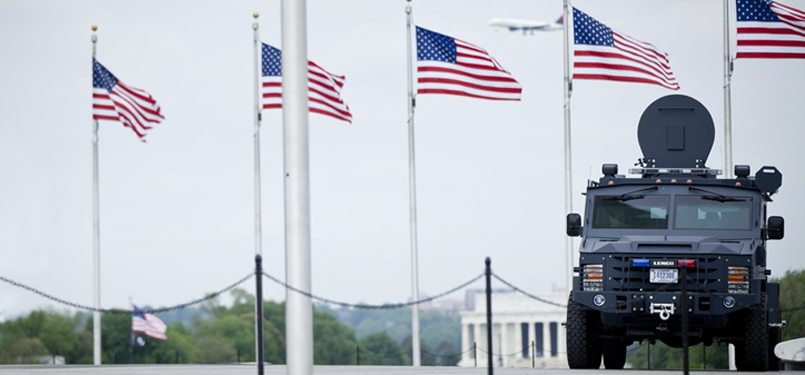The vehicle manufactured by Lenco Industries is called the Bearcat, a cuddly acronym that doesn’t capture the weighty mission referenced in its full name: Ballistic Engineered Armored Response Counter Attack Truck.
It’s essentially a steel shell on wheels — 20 feet long, 10 feet wide, 18,000 pounds, powered by a 300-horsepower diesel engine — that can haul 12 passengers, reach speeds of 70 mph and ignore a hail of .50-caliber gunfire.
You may have seen a similar vehicle on newscasts of civil unrest in Ferguson, Missouri, and probably shuddered at the sight — because a helmeted cop knelt on top, with a rifle resting on a tripod, while a phalanx of gun-toting riot police marched alongside. What was described as crowd control looked more like a military operation. Critics across the nation howled — comedian John Oliver nearly went into histrionics — over the “tanks” that law enforcement were employing in the name of keeping the peace.
It made me wonder about our local authorities’ perspective on armored vehicles. That’s what brought me to the Contra Costa Sheriff’s Office, which politely took exception to budding fears of a police state.
Undersheriff Michael Casten explained that Contra Costa has had a Bearcat since 2007, purchased for $249,000 with a Department of Homeland Security grant. It’s not a repurposed military vehicle; it is designed for civilian law enforcement. The Sheriff’s Office deploys it only for high-risk incidents.
“We use this in a situation where we anticipate armed subjects,” he said. “We also use it to rescue civilians from gunfire.”
It’s not an assault vehicle, he said, nor is it intended for crowd control. It’s a mobile shield that enables law officers to closely engage armed suspects without being shot. Before the Bearcat, SWAT personnel crept up on deadly situations behind hand-carried ballistic shields barely larger than trash can lids.
“This is great for negotiations,” said Sheriff’s Capt. Chris Simmons. “Prior to the Bearcat, when we did a P.A. announcement, we had to find cover first. With this thing, you can roll right up to the front door of the suspect.”
That was the case 11 months ago in unincorporated San Ramon, where a man holed up in a foreclosed house fired a gunshot through his front door and wounded the property manager there to serve an eviction notice. Police officers were forced to retreat, and the suspect refused to surrender — until the armored vehicle arrived.
“We used the Bearcat to both evacuate people from harm — civilians and sworn officers — and to deploy SWAT personnel to remove the person from the house,” Simmons said. They got close enough to lob tear gas inside and force him into the open, where he was apprehended without firing a shot.
Casten is puzzled by the talk of militarized police. “I don’t see how that leap was made,” he said. “These vehicles are used for officer protection.”
Contra Costa’s Bearcat is available to all law enforcement units in the county. (The Sheriff’s Office supplies the drivers.) Of 24 deployments in the past three years, 14 have been by other agencies. And when the vehicle is in use, something serious is going down.
“The guys inside this vehicle usually are driving toward a guy they know is shooting at them,” Simmons said. “What better way to transport them than in something like this?”
That’s a slightly different picture from the one painted in Ferguson.
By Tom Barnidge
Contra Costa Times Columnist


